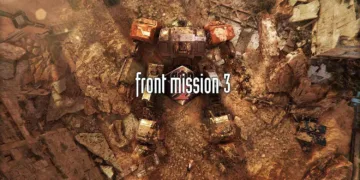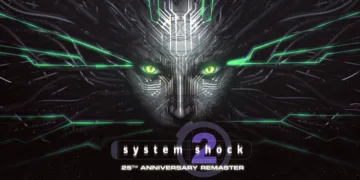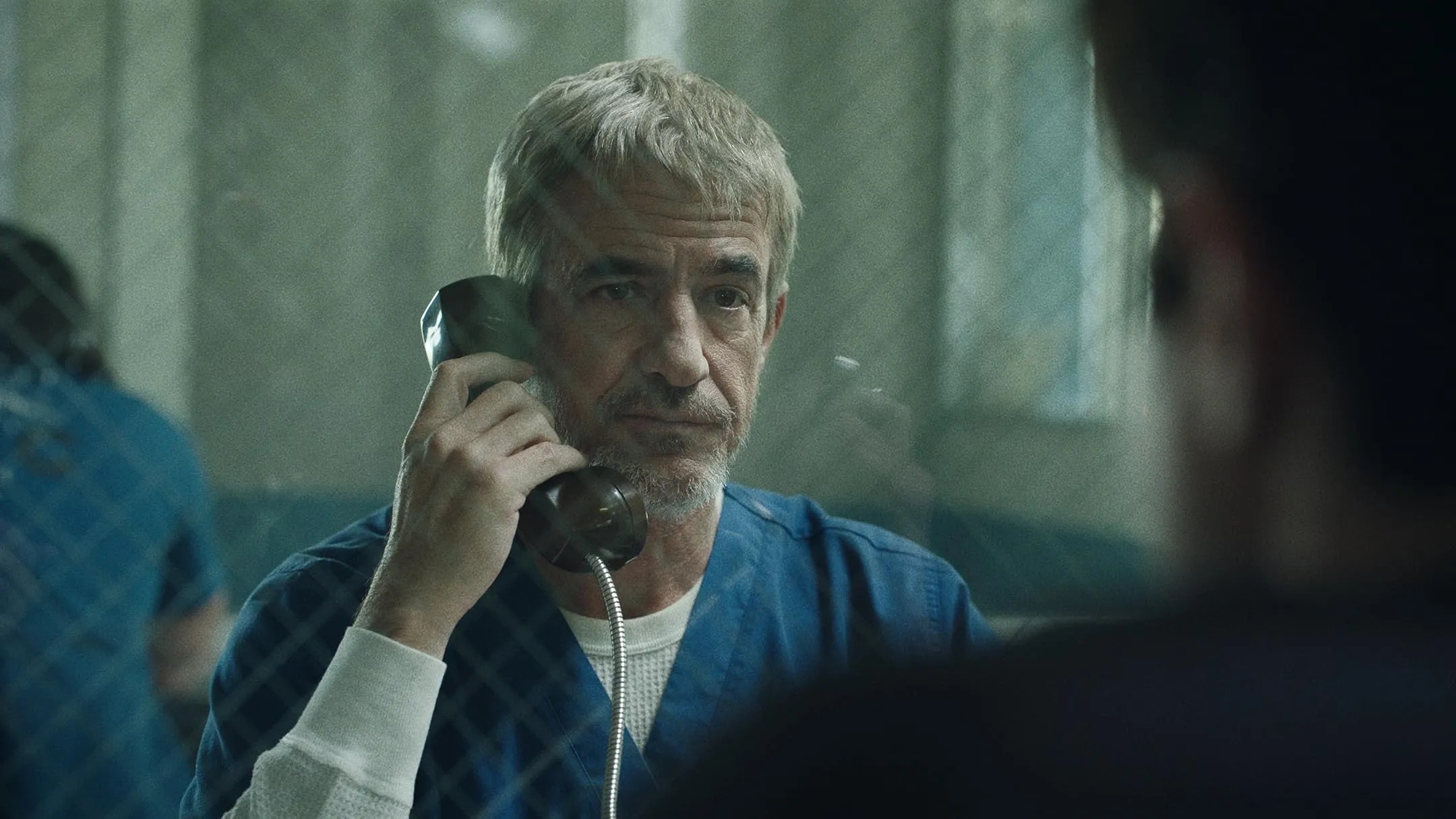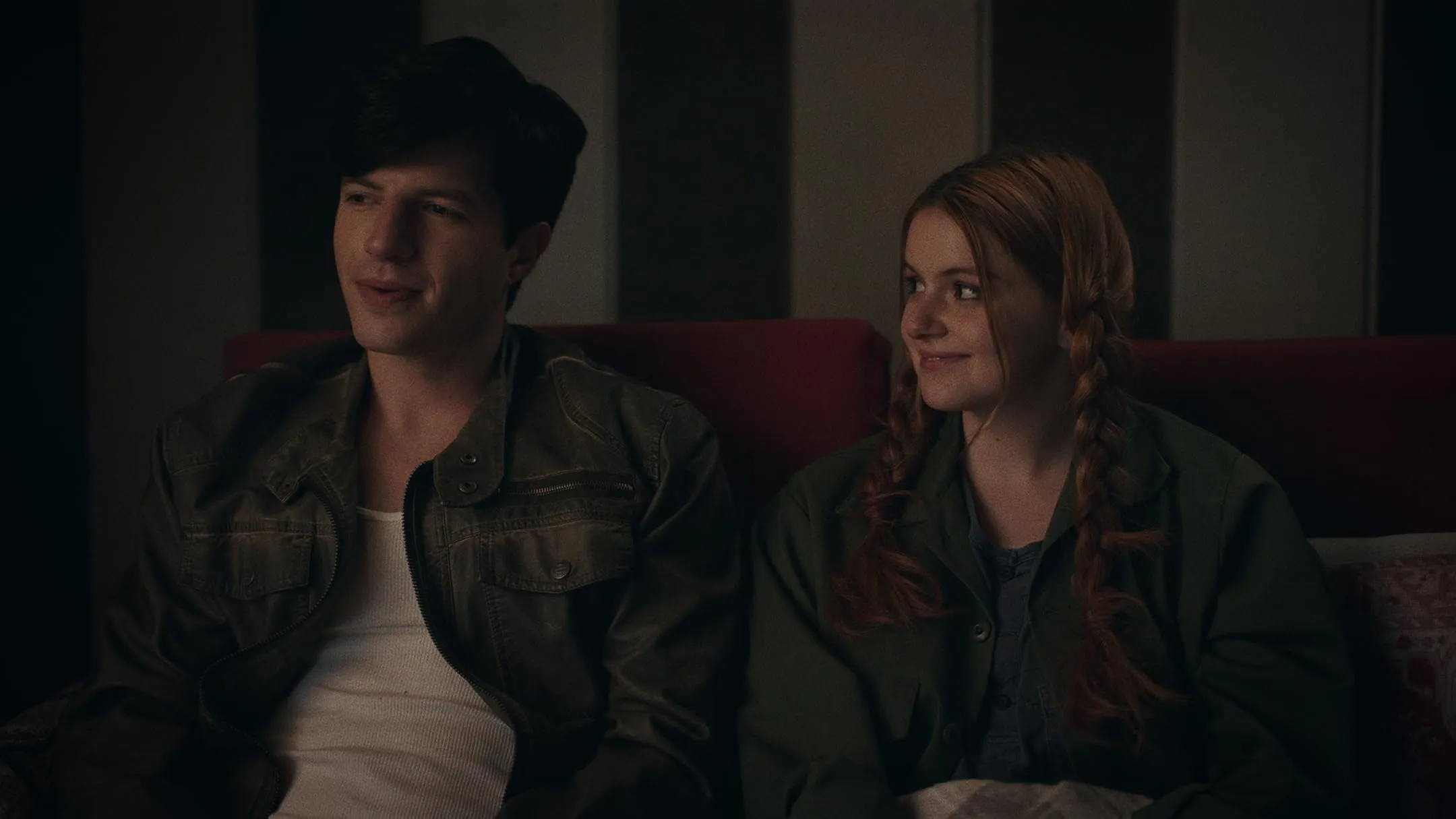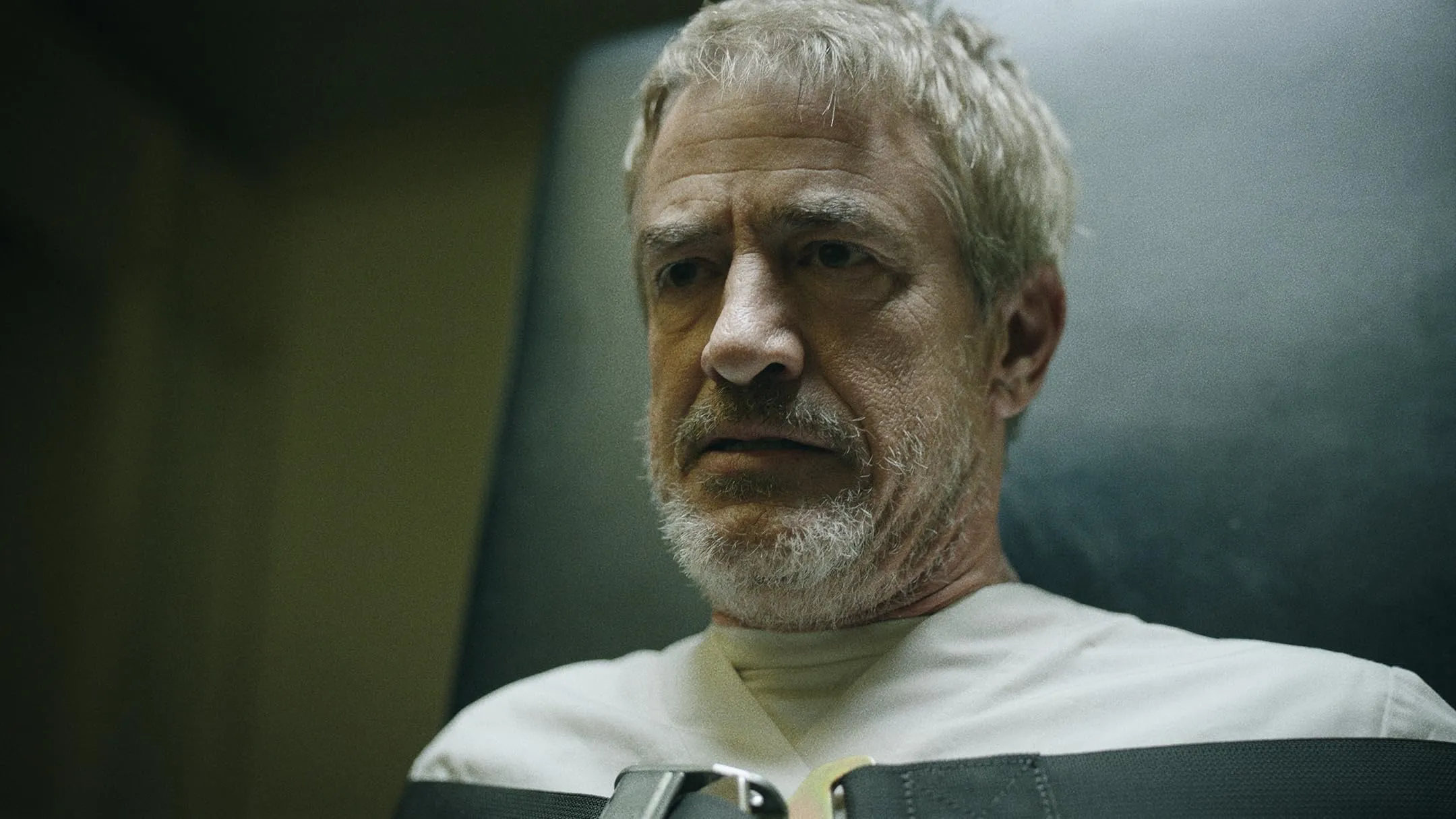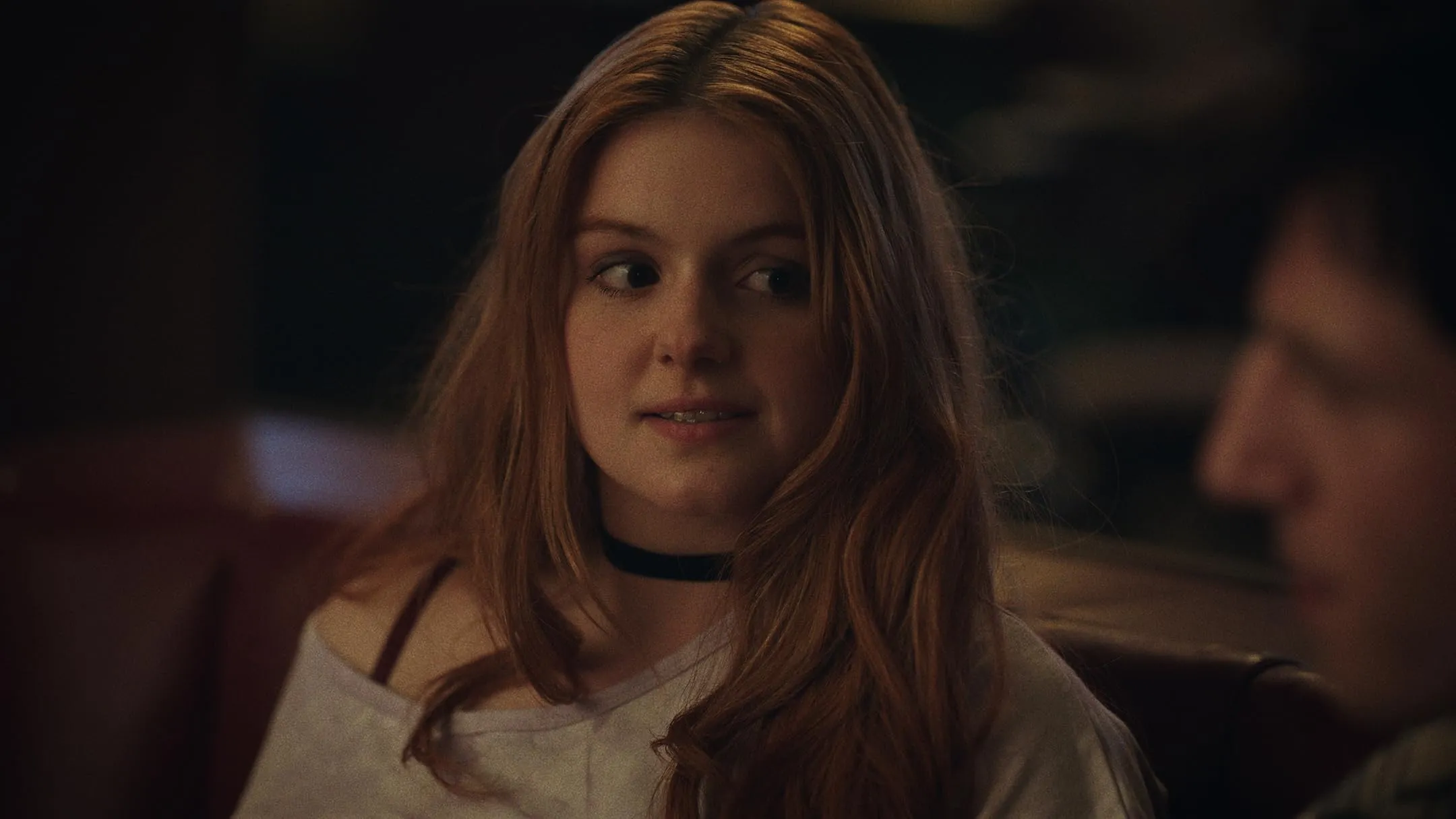Set in the early 1990s in a gritty, urban backdrop reminiscent of Richmond, California, the film opens with a scene that shocks the viewer: Gabe, a working-class man with a hidden propensity for violence, brutally assaults a local bully in full view of his young son, Eli. This single act of brutality sets a powerful narrative engine in motion. The film wastes no time in establishing the weight of its themes.
We watch as Eli, caught in the immediate aftermath of that violent day, embarks on a path steeped in conflict and uncertainty. The story tracks his transformation from a boy marked by a singular moment of horror into a man wrestling with a legacy of aggression and moral ambiguity.
Eli’s character is molded by the shadow of his father’s actions—a legacy that seems to cast a long, unavoidable shade over his every decision. As he navigates a life punctuated by personal loss and haunting memories, the film raises significant questions about the imprint of past actions on the present. The tone remains dark throughout, capturing the burden of inherited behavior and the relentless pull of personal history.
Plot Mechanics and Structural Analysis
The film opens on a playground, where the camera lingers on the innocent faces of children playing and cleaning after school—a serene tableau soon disrupted by a shocking burst of brutality. Gabe and a young Eli are introduced in a setting that initially feels ordinary, with everyday routines painting a picture of normalcy. This calm serves as a deceptive surface, hiding the tumult beneath. Small hints of unresolved pain and unspoken issues start appearing in the expressions and interactions of the characters.
The pivotal moment occurs when Gabe commits an act of violence that shatters the facade of that ordinary day. The abrupt killing on the playground is executed with little warning, leaving the audience with a sense of disquiet. This scene serves as a sharp pivot point, setting the tone for a narrative that is as unyielding as it is disconcerting. A brisk montage, detailing Gabe’s trial and sentence, underscores this dislocation in time, lending a staccato rhythm to the unfolding events.
As the narrative progresses, the film traces the chain reaction sparked by Gabe’s past. We witness the transformation of Eli as he slips from a state of tentative normality into one marked by internal battles and external chaos. Key turning points include moments where societal pressures and personal failures trigger violent responses from Eli, hinting at a deep-seated conflict inherited from his father. Techniques such as abrupt flashbacks and rapid editing are employed to repeatedly remind us of that fateful incident, effectively linking past and present in a manner that feels deliberate.
The buildup to Eli’s most significant actions is marked by palpable tension. The film measures each violent outburst with precision, oscillating between quiet introspection and explosive confrontation. Structural choices in pacing maintain suspense while occasionally diffusing tension in a way that invites the viewer to reconsider the forces at play in this troubled legacy.
Character Analysis and Performances
Dermot Mulroney’s performance as Gabe immediately stands out as the spark that ignites the film’s narrative. His portrayal carries a quiet intensity that hints at inner turmoil and a past steeped in regret. In moments of brief screen time, his actions—filled with a cold detachment that borders on tragedy—set a tone that casts a long shadow over the narrative. Mulroney’s Gabe does not simply incite fear; the character also raises questions about duty and loss, even as the limited dialogue leaves much unsaid.
Dylan Flashner, in the role of Eli, marks a stark departure from the ordinary. His character evolves from a young man marked by confusion into someone confronted by an overwhelming legacy of impulsive violence. Flashner’s performance captures the push and pull of inherited anger and the struggle with a personal code in an unforgiving world. His interactions expose layers of internal conflict and a growing sense of isolation, highlighting the pressures that drive him into increasingly dangerous behavior.
Ariel Winter, appearing as Hayley, introduces unexpected complexity. Her part is not one of mere companionship; she presents a paradox of tenderness amid chaos. The interactions between her and Eli reveal a relationship that hints at soft moments in an otherwise harsh reality.
Other characters, including the counselor and fleeting cameo roles, contribute brief but memorable insights into the chaotic world that surrounds the two leads. They serve as reference points that measure the cost of the cycle of aggression that grips the film.
The cast, in many instances, feels caught between archetype and fully realized character. While certain figures exist as stark symbols of inherited traits, there are moments when the actors imbue their roles with shades of authenticity that challenge a one-dimensional reading of genetic determinism.
Themes and Symbolism
The film centers on the idea that violence passes from one generation to the next. Its script presents this notion through characters’ dialogue and consistent visual signals. Gabe’s violent act, witnessed in a single shocking moment, becomes a motif that reappears in unexpected ways. Flash cuts, recurring imagery, and muted color schemes create a visual language that ties the past to the present, questioning if a person is doomed by blood rather than choice.
A series of scenes shows how the past continues to influence Eli’s decisions. One striking sequence uses interlaced flashbacks paired with present-day turmoil, reminding viewers that the past does not fade away easily. This connection between memory and behavior poses a challenge to the idea of self-determination. Here, the film questions whether young Eli can set aside inherited ways or if every action is an echo of his father’s irreversible deed.
The narrative also examines moral gray areas by portraying violent acts as acts that carry both a hint of retribution and clear moral cost. Moments arise where justice is rendered in swift, public displays that force the audience to weigh immediate payback against the long-term implications for those left behind. There is a careful balance between exposing the viewer to acts of brutality and using them to question the very notion of rightful consequence.
Further, the film makes pointed references to societal issues such as bullying and prejudice. Visual motifs—be they recurring flash images or deliberate shifts in the film’s muted palette—reinforce the message that acts of aggression ripple outward into the community.
These symbols are not mere decoration; they articulate a view of a world where small, unchecked wrongs can lead to devastating outcomes. The film, by interlacing these thematic elements with its narrative, invites a reexamination of how personal history and societal pressures coalesce into an enduring cycle of destructive behavior.
Technical Execution: Cinematography, Editing, and Sound
The film opts for a muted color scheme inspired by the 1990s, relying on grey and brown tones that cast a somber mood over the narrative. The visual style employs both handheld shots and static compositions that capture the grit of urban life, with careful framing that sometimes underlines the isolation of its characters. At moments, rapid, jarring transitions and flashes create a sense of dislocation, challenging the viewer to keep pace with the unfolding drama while reinforcing the weight of past events.
Editing is a cornerstone of the film’s storytelling. Quick cuts intersperse violent encounters with quieter moments of internal conflict. Non-linear segments, including flashbacks and brief montages of key events like trial scenes, serve to stitch together the fragmented nature of the protagonist’s memory.
This approach builds tension in bursts yet risks disorienting the viewer when the sequence of events becomes hard to follow. The rhythmic editing appears designed to mimic the sporadic nature of traumatic recollection, adding texture to the narrative without resorting to predictable patterns.
The sound design further intensifies this experience. Layers of ambient noise work alongside abrupt sound effects during scenes of violence, creating a sonic environment that mirrors the characters’ inner states. The musical score, which slips in and out of the background, attempts to balance the stark emotions portrayed on screen. At times, the chosen tracks underscore moments of melancholy and fury, working in tandem with the visuals to amplify suspense and create a somber, reflective tone.
The deliberate pairing of cinematography, editing, and sound demonstrates a commitment to linking technical elements with narrative intent. Each component reinforces the themes of memory, trauma, and the inescapable pull of a troubled past, even as a few choices invite a second look regarding their effect on clarity and engagement.
Directorial Vision, Production Value, and Final Thoughts
Barry Jay’s approach is clear in pairing harsh, unexpected violence with moments of bizarre humanity. His style, shaped by a modest budget, relies on a raw aesthetic that favors a mood-driven narrative over polished production. Jay guides the story with a firm hand, mixing stark brutality with occasional flashes of odd charm. The visual and narrative choices reflect a director who permits budgetary restrictions to influence the work’s texture, lending it a rough quality that resonates with fans of uncompromising storytelling.
The set design and location choices capture a distinct 1990s atmosphere, using cramped interiors and weathered urban backdrops that contribute to an unmistakable sense of decay. The film deploys rapid scene transitions and abrupt flashbacks that inject an energetic yet unsettled pulse into its progression. These stylistic elements, though constrained by limited resources, add a certain raw appeal, marking every frame with the weight of past errors and present tension.
Themes of inherited violence and societal decay are woven consistently throughout the film. Questions of whether destructive impulses arise from genetic inheritance or environmental pressure echo in the narrative at every turn. The work initiates a dialogue on personal accountability amid a troubled social environment while carving its niche within the dark psychological thriller genre. Jay’s efforts to confront viewers with unyielding truths provoke a measure of reflection, even as the narrative occasionally strains to maintain its ambitious vision.
Full Credits
Director: Barry Jay
Writers: Barry Jay
Producers and Executive Producers: Barry Jay, Dylan Flashner, Benjamin Mackey, Prima Apollinaare, Dermot Mulroney, Jonathan Shores, Laura L. Cottrel, Chris Gann
Cast: Dylan Flashner, Dermot Mulroney, Benjamin Mackey, Prima Apollinaare, Jonathan Shores, Laura L. Cottrel, Chris Gann
The Review
Like Father, Like Son
Barry Jay's film takes a bold stab at examining inherited violence through stark visuals and disjointed narrative techniques. The raw aesthetic and sporadic flashbacks inject a restless energy into the story, yet technical shortcomings and uneven pacing hinder its full impact. While certain scenes offer clear, memorable insights into the cycle of brutality and internal conflict, the film remains a flawed experiment that struggles to maintain coherence throughout its ambitious thematic scope.
PROS
- Atmospheric cinematography that enhances the film’s mood
- Bold thematic ambition in exploring generational violence
CONS
- Uneven pacing that undermines narrative flow
- Disjointed editing creates moments of confusion
- Technical limitations that detract from overall impact
- Inconsistent character development among supporting roles
- Occasional narrative disorientation that challenges viewer engagement

































